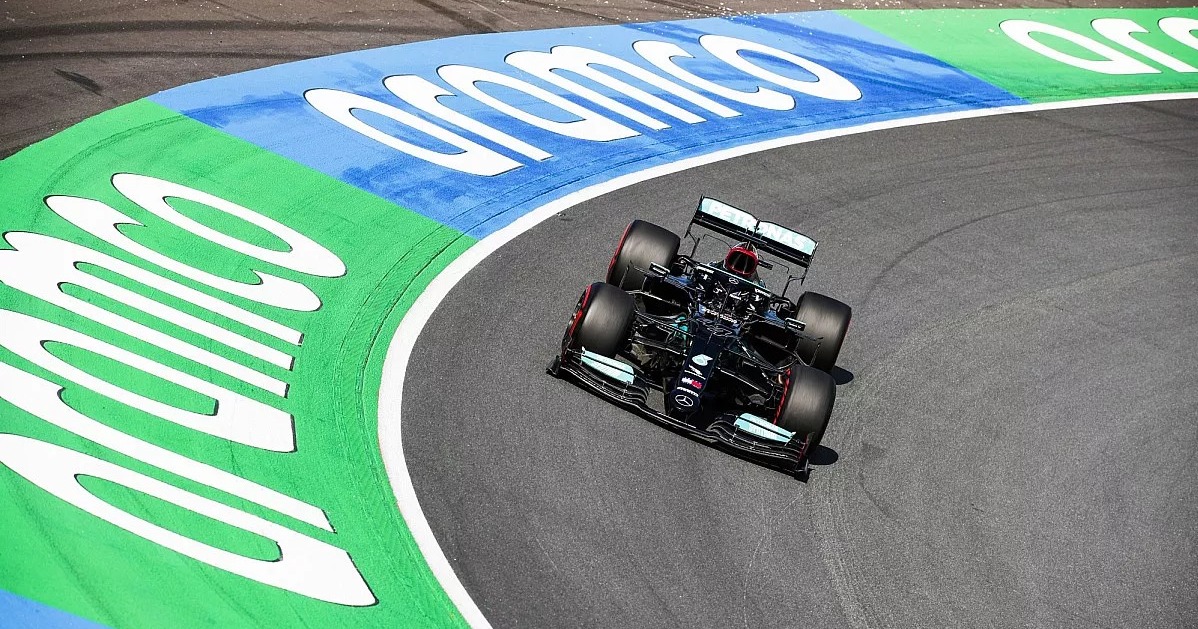Physics Blog


Jerry Zhang
Feb 19, 2022
Formula 1 - Circular Motion
Introduction:
My chosen topic is race cars, specifically Formula One and Formula E race cars as they are the pinnacle of motorsports. I chose this topic because as a fan of race cars, I am always curious about the physics behind them. With my knowledge of Grade 12 physics, I would like to explore and solve different scenarios in race cars. In the world of race cars, almost everything is physics-related! This includes kinematics when the race cars are going around the circuit; the collisions caused between race cars at a fast speed. Formula-E also relates to the electric force and electric field by letting the race cars become fully powered by electricity.

Kinematics and circular motions play a major role in the world of Formula One Racing. The result of a race can even be affected by the different static friction of the tires (new tires have higher static friction with the track and are faster), and the velocity at a specific turn. With Circular Motion concepts learned in grade 12, we can actually calculate the maximum speed of a Formula One race car on a banked curve!

As you have seen in the image above, this is Turn 3 of the Zandvoort circuit in the Netherlands. It is one of the most interesting turns among all Formula One Circuits as there is a banking angle of 18º.
Background Information:
Circular Motion:
In order for the circular motion to occur, there must be a centripetal acceleration directed toward the centre of rotation at every moment. Thus, there must be an unbalanced net force to cause the centripetal acceleration.
Centripetal Acceleration:
The object in uniform circular motion accelerates toward the center of the circle at every moment. The word ‘centripetal’ means moving toward the centre, the acceleration is called Centripetal acceleration. Its direction continually changes as the object moves.
Centripetal Force:
Since there is a centripetal acceleration, there must be a net force to produce it. The net force causing the centripetal acceleration is called the centripetal force that points in the same direction as the acceleration toward the center of the circle. The magnitude of the centripetal force can be expressed as:

where m stands for an object’s mass, moving at a velocity of v and on a circular path of radius r.
Friction Formula:
The force of friction can be expressed as:

Where µ stands for the coefficient of friction (constant ratio) and FN stands for normal force.
In the context of the question, static friction acts between the tires and the track since the part of the tire that is actually contacting the track is not moving with respect to the track. It is static!
1D Equations of Kinematics:

Acceleration can be calculated if initial velocity, final velocity and time are given, where ∆v represents the difference between final velocity and initial velocity.

Displacement can also be calculated if initial velocity, final velocity and acceleration are given. Notice in this equation we do not have time since in part b of the question we do not need to solve for time.

Question 1: George Russell is about to turn!
George Russell is trying to go around a banked curve in the Zandvoort circuit, 750 metres on a straight, flat racetrack before entering the curve, he noticed that he was travelling at 324 km/h. The coefficient of static friction between his tires and the road is 1.7.
Assume there’s no air resistance and the slipstream and dirty air produced by race cars would not be taken into consideration.
a. What is the maximum speed George can safely negotiate a turn with a radius of 125 m, if the banking angle is 18º?
General Steps to approach this question:
1. Isolate for the velocity
2. Check the y-direction and isolate for the normal force and substitute it back into the equation
3. Plug in the numbers to solve for maximum velocity
First, let’s draw a Free Body Diagram of George Russell’s race car and list our given information:

Notice: The Normal Force is always perpendicular to the curve’s surface while the gravitational force is always directed downwards. The static frictional force points toward the centre of the circle along the curve.
As we can see, the centripetal force is always pointing towards the centre of the circle formed by the banked curve, it can also be expressed as the x-component of the static frictional force and the x-component of the normal force. Thus, we can begin isolating for velocity.
Notice: We can further simplify static friction force by using the friction formula! (To Simplify or not to simplify, that is the question.)

However, we do not know the value for mass and normal force at this point. We can check the y-direction to isolate normal force! The y-component of the normal force cancels out with the gravitational force as well as the y-component of the force of static friction.

Now, we can substitute normal force using the expression we isolated in the step above. As you may notice, mass also cancels out! (To cancel out or not to cancel out, that is another question) At this point, we can plug in all of our numbers and get the maximum velocity.

In the end, the maximum speed George can safely negotiate a turn with a radius of 125 m, and a banking angle of 18º is approximately 74.44 m/s!


b. His Mercedes W13 can brake from 200 km/h to 0 km/h within 2.12s. How far from the banked curve does he need to brake to ensure he can safely go through the turn? Assume the braking system of Mercedes W13 works consistently every time.
General Steps to solve this question:
1. calculate acceleration using the given information
2. calculate displacement using the 1D kinematics equation
Let's write all of our given information down first. We can also calculate the acceleration of the Mercedes W13 braking system using the 1D kinematics equation!

Then, we are given initial velocity, final velocity and acceleration to solve for displacement, using the 1D kinematics equation.

Therefore, we get that George needs to brake at 48.82 metres from the curve to ensure that he can safely go through the turn!
Our calculation is actually quite accurate! Usually, Formula 1 drivers aim to enter into a corner slow and exit as quickly as possible. The “perfect” braking point lies approximately 60 meters away from the corner.
Learn more about the F1 braking system:
In our road car at home, when we press the brake pedal, there is a servo-assist system that multiplies the pressure we are applying into the master cylinder to provide braking effort. Formula One drivers have to provide all that force! Watch the video below for further information on the Braking System in Formula One (Hint: some of the messages in the video will be very useful for understanding the next blog!) :
Jerry Zhang
High School Student | Life-Long Learner | GitHub: https://github.com/JerryZhang0920